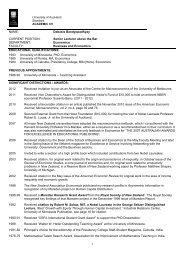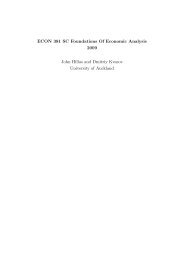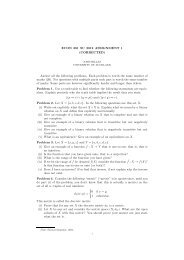Left Further Behind - Child Poverty Action Group
Left Further Behind - Child Poverty Action Group
Left Further Behind - Child Poverty Action Group
Create successful ePaper yourself
Turn your PDF publications into a flip-book with our unique Google optimized e-Paper software.
under the Māori Health Strategy suggests that Whānau Ora, in its application to social services,<br />
is likely to provide real and substantive Māori decision-making and engagement in social policy<br />
making as well as Māori design and implementation of social initiatives within communities (Ministry<br />
of Health, 2002 , p.iii). However, as suggested by the experiences in health and in existing familycentred<br />
programmes, it may take at least a few years for such changes to result in measurable<br />
lessening in the inequities that create poverty within Māori whānau and communities.<br />
Given the high likelihood that the Whānau Ora approach will struggle to make an impact on the<br />
implementation of the social security system, and the considerable time needed for increased Māori<br />
decision-making and engagement in social policy to result in measurable change in poverty rates for<br />
whānau Māori, poverty, for many Māori children, will remain the daily reality in the short to medium<br />
term.<br />
Māori and <strong>Poverty</strong><br />
There is no need to replicate the enormous amount of data which show clearly the economically<br />
disadvantaged position of Māori. In fact, the Whānau Ora Taskforce Report (Whānau Ora Taskforce,<br />
2010, p. 15) summarises this:<br />
Despite limitations, current data suggest that whānau members face a disproportionate level of<br />
risk for adverse outcomes, as seen in lower standards of health, poorer educational outcomes,<br />
marginalisation within society, intergenerational unemployment and increased rates of offending.<br />
<strong>Further</strong>, in response to socio-economic hardship, a range of problems are likely to co-exist<br />
within the same household, affecting health, employment, behaviour, education, and lifestyle<br />
simultaneously. In addition to socio-economic determinants, some studies have shown that even<br />
when social and economic circumstances are taken into account, Māori individuals still fare worse<br />
than non-Māori.<br />
Table 4.1 shows the extent of income inequality for Māori in relation to other ethnic groups: Between<br />
1988 and 2008 median income for Māori increased by $3,300 while for the population as a whole it<br />
increased by $4,400.<br />
Table 4.1. Real equivalised median household income (BHC) by ethnicity 1988 to 2008<br />
($2008) (Source: Perry, 2009a: Table D.5)<br />
1988 1990 1992 1994 1996 1998 2001 2004 2007 2008<br />
Euro/Pakeha 25,100 25,000 22,500 22,100 23,000 25,100 25,600 28,800 29,500 31,000<br />
NZ Māori 20,800 18,800 15,300 15,400 18,400 19,400 20,800 21,500 21,000 24,100<br />
Pacific 20,400 17,900 16,200 14,500 15,900 17,700 17,100 19,600 23,000 22,300<br />
Other 22,600 21,700 21,400 16,100 18,500 15,900 24,900 20,900 26,300 25,400<br />
All 23,900 23,400 21,100 20,400 21,600 23,500 00 24,100 25,900 27,400 28,300<br />
The disadvantaged position of Māori in relation to overall income inequality is reflected too in the<br />
hardship data in the early (as yet preliminary) data from the 2008 Report on Living Standards. Here<br />
too, the position of Māori is significantly worse than the population overall as demonstrated in Figure<br />
4.1 below. The scale moves from ‘severe hardship’ on the left to a ‘very good’ standard of living on<br />
the right-hand side.<br />
The 2008 Living Standards preliminary research also notes that Māori and Pacific households have<br />
a hardship rate two to three times higher than other ethnic groups. As recent Ministry of Social<br />
34









